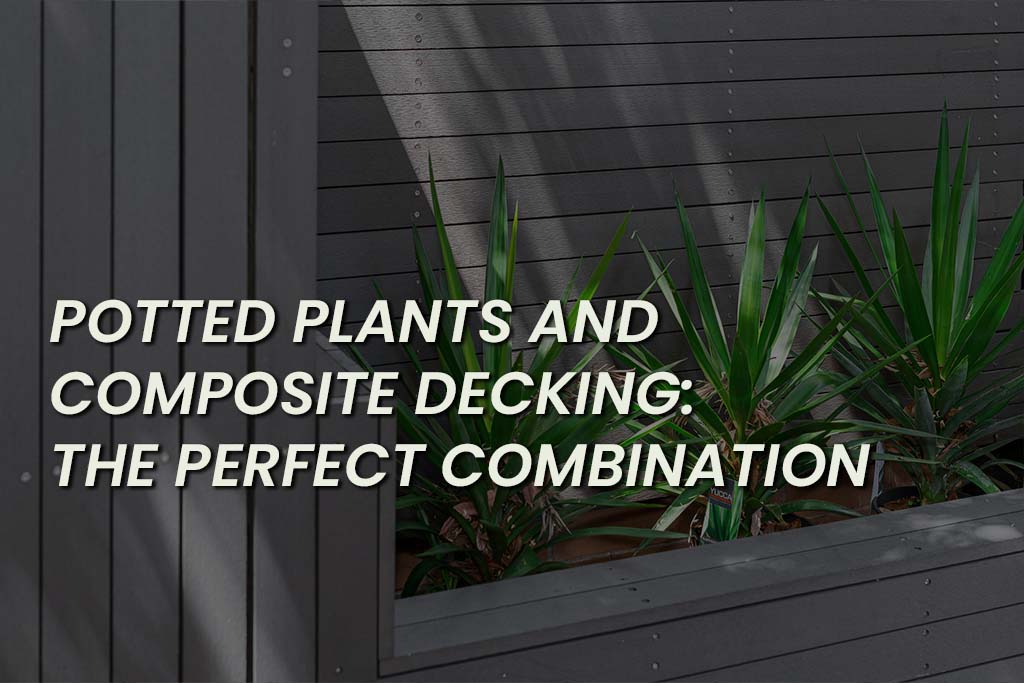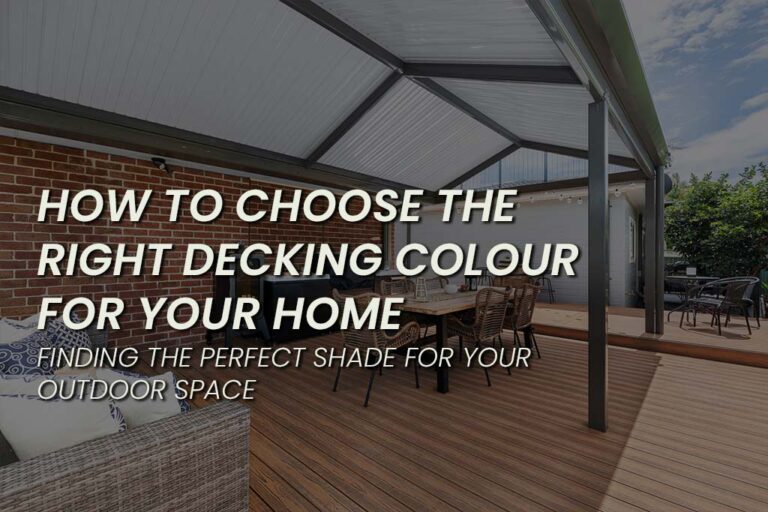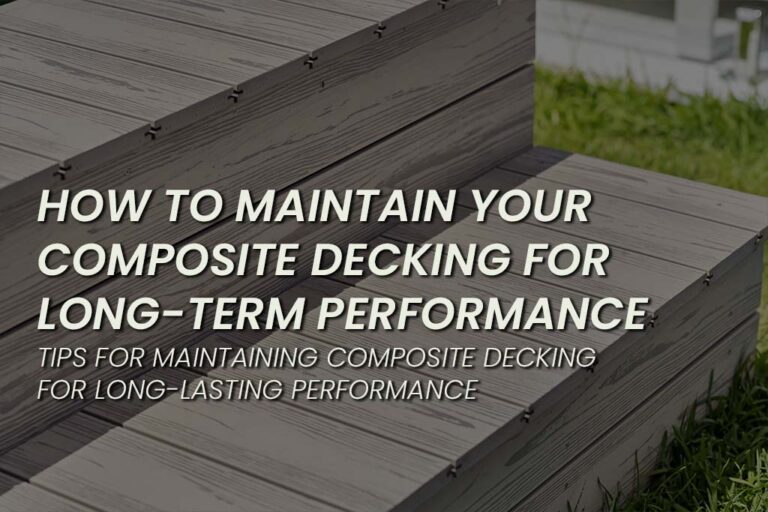Decks are the perfect place to grow outdoor plants. They are seen frequently, allowing for the easy detection of pests and diseases, they provide warmth and protection from wind, and it brings the garden right to your door.
And let’s face it, you might have a table for outdoor dining or a beautiful bench or chair to sit and sip your morning coffee in the sun, but no deck really looks complete without some plants dotted around.
But pot plants bring their own set of problems on timber decks with moisture and mildew. So, what are green thumbs to do? The solution doesn’t lie in ditching the plants, but in taking a closer look at what your deck is made of.
The benefits of composite decking for potted plants
There are plenty of reasons why composite decking has an advantage over traditional timber when it comes to greening up your space. Where traditional timber decks can become stained, mouldy or even crack under the elements, composite decking is incredibly durable and has been designed to overcome these challenges.
Benefit 1: Mould and mildew resistant
Pools of water under your pots can create the perfect environment for mould and mildew to grow on your deck, especially during the humid summer months. However, the PVC-wood composite core of the Brite range of composite decking makes it impervious to mould. Mould and mildew may still appear, but unlike timber, the mould does not penetrate the core and compromise the structural integrity of the board.
Mould will make timber rot, but it doesn’t have a long-term impact on composite decking. When you find mould on composite decking, all you need to do is clean it off. On timber, you may need to replace the whole decking board.
Benefit 2: Less likely to stain
The last thing you want with a new deck is to ruin the look of it with unsightly stains from moisture trapped beneath pot plants or with splashes from the hose. Unlike traditional timber decking materials, some composite decking materials are non-porous, meaning it is more resistant to stains. Check out our Titanium range for stain resistant composite decking.
Also remember – keeping your composite decking clean will assist in avoiding stains and help it stand the test of time.
Benefit 3: No cracking or warping
Sunshine on your deck provides the perfect environment for your plants to grow and thrive but traditional timber decking boards can crack or warp over time with exposure to UV light. However, composite decking is UV stable. It’s a bit like having sunscreen for your deck.
Benefit 4: Termites won’t touch it
The constant moisture required to keep potted plants healthy is almost guaranteed to attract unwanted pests like termites to a timber deck. Composite decking, on the other hand, eliminates the conditions that termites love, keeping your deck free from pest attacks.
Benefit 5: A more cohesive design
Homeowners are not limited when it comes to the colour, look and feel of composite decking. Not only can you design your deck to match your home, but your pots and planters can also complement this to create a seamless look that’s attractive to the eye.
The best plants for your composite deck
- Herbs and vegetables. As decks are often an extension of our living spaces, it makes sense to have pots full of plants you use frequently right where you need them. For example, you might choose to grow herbs like oregano and basil close to a pizza oven.
- Architectural plants. If it’s a modern look you’re after, large, slower-growing plants such as the native bottle tree or banksias are great options for pots.
- Fruit trees. There’s no better way to show off all your hard work in the garden than by having those delicious-looking lemons or limes close by for cocktail hour.
- Larger succulents such as agaves can be absolute showstoppers when potted up. They also require little maintenance.
- Plants for privacy. With the help of screens, vines or trailing plants can be a fantastic option to give your deck near-instant privacy. Fast-growing bamboo can also look attractive and can be easily pleached to keep them looking tidy.
- Plant beautiful blooms to attract butterflies and other beneficial insects. Not only will they look great, but they will also help the rest of your garden grow.
- Planting something that is native to your area means it is more likely to survive and is therefore more sustainable. It will also benefit your entire neighbourhood by attracting native wildlife and insects.
Tips for growing potted plants on your composite deck
There are plenty of ways to keep plants on your deck happy year-round, which means more time for relaxing.
- Use planters or pots of similar colour or style for a more cohesive look.
- Create mini ecosystems by placing plants together. This also makes for easier watering.
- Use patio furniture such as umbrellas to create shade. Research how much sun your plant actually requires.
- Place larger plants or potted shrubs nearer the edge of your deck to shade more delicate plants.
- Mix and match plants according to your garden’s overall style.
Tips to protect your composite decking from plants
Allowing for good airflow to safeguard against mould and mildew, and preventing water from pooling and sitting on your deck, are key to protecting your deck’s structural integrity and beauty while inviting nature in with the use of greenery.
- Use pot feet or risers to elevate planters. This keeps drainage holes clear and allows for aeration, meaning healthier plants. They also help protect the surface underneath pots.
- Pot trolleys or caddies are stands on wheels that are perfect for heavy pots. They keep plants elevated while also allowing them to be moved around easily.
- Plant stands are available in all shapes, sizes and designs and allow for airflow around your plants. They can hold one plant or many and can even be used to create a sense of privacy.
- Rotate smaller pots frequently to give your deck time to dry out between watering.
- Get your plants up off the deck completely by using hanging pots. These often come with built-in saucers or absorbent liners to prevent drips.
- Use pots with built-in saucers to prevent water from draining straight onto your deck.
- Invest in good-quality soil in your planters to avoid the need to over-water and to prevent water draining straight through the soil and leaving dirt on your decking. Use rocks or other materials in the bottom of larger planters to prevent plants from rotting.
- Clean up regularly by giving your deck a good sweep to remove built-up dirt, leaves and grass clippings or mulch from pots.
- Self-watering containers use reservoirs to water your plants from below. They are a great option to cut down on your watering time and avoid splashes from the hose or watering can onto your deck.
- Remove the need for pots altogether by creating raised garden beds within or beside your space using composite decking, creating a seamless design.
The best composite decking for your potted plants
Brite decking’s NextGen Titanium has been engineered to withstand Australia’s harsh weather conditions. Pot plants are no problem because this strong and durable, weather-resistant decking features a non-porous composite core that minimises stains, resists mould and repels pests.
Want to know more? Call us and speak with our friendly decking experts to find out how we can help you create the deck of your dreams, or request a sample to see it for yourself.



